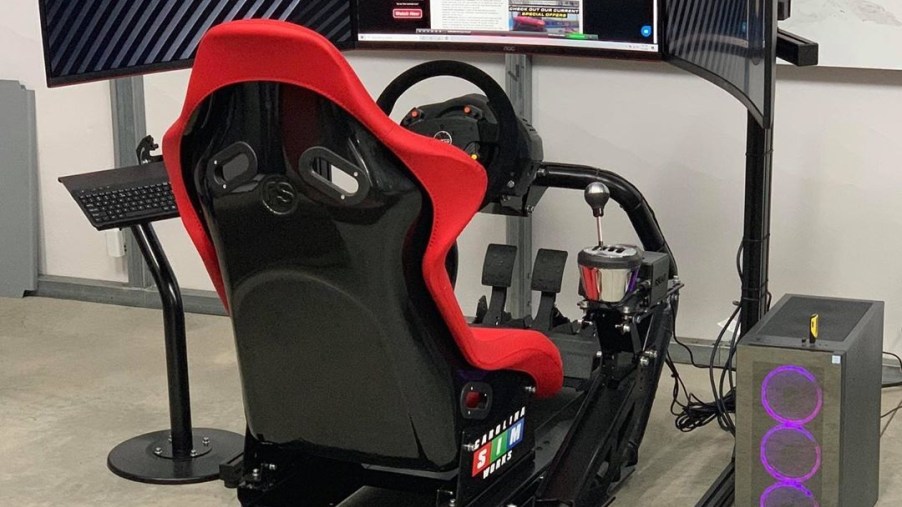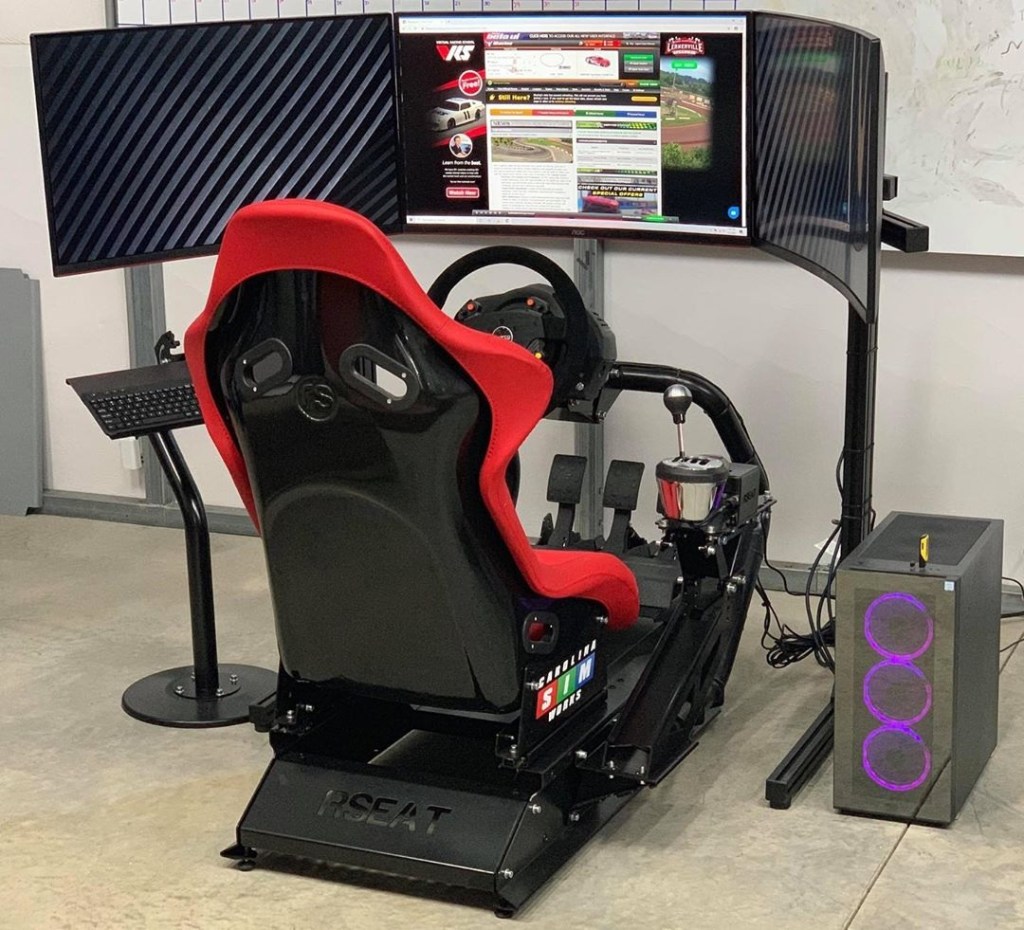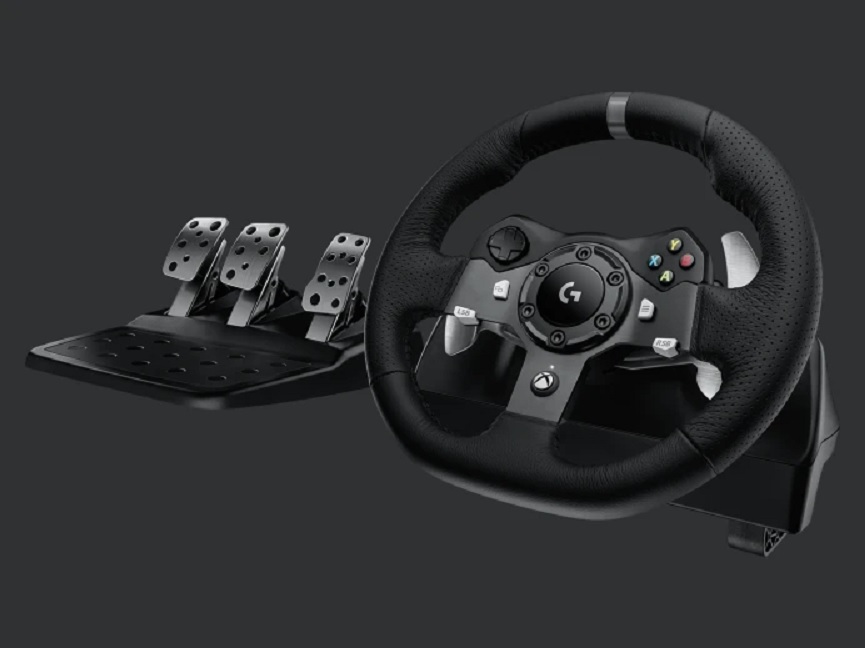
How You Can Get Started in Virtual Racing on the Cheap
COVID-19 has impacted much of the automotive world. Sales of new cars are down across the board, as is production. Automotive events have also been canceled or postponed, including many high-profile races. Luckily, a new form of racing is stepping up to fill the void: virtual racing. And you can join in, too.
Can virtual racing replace the real thing?
In a way, Road & Track muses, it’s starting to.
Autoweek reports 1.3 million people watched the O’Reilly Auto Parts 125 NASCAR event in March 2020. Formula 1 is also replacing its Grand Prix races with virtual ones, R&T reports. Even MotoGP is getting in on virtual racing, Motorcyclist reports.
True, virtual racing can’t replicate every single sensation that a racer or spectator would experience on a real racetrack. But in terms of recreating the behavior of a car or motorcycle, we’ve moved way beyond Pole Position.
Nowadays, the game and simulation makers work closely with race teams and automakers to gather precise data about each vehicle. In many cases, the software developers themselves take to the wheel, like Gran Turismo creator Kazunori Yamauchi. These programs use complex physics engines to replicate how tires grip, how air passes over wings, and how weight transfers around a corner.
Engineers, programmers, and artists gather recordings of real engines revving and photos of landscapes. Tracks are measured with lasers down to the millimeter. In fact, these renderings and measurements are so accurate, they’ve been used to help repair real race tracks, Autoweek reports.
And it’s not like virtual racing simulators are new to motorsport. To help new drivers train or dial in a new car design, R&T explains, race teams use simulators hooked up to hydraulic components that mimic real-world conditions. Admittedly, these are multi-million-dollar machines.
But as The Drive reports, you don’t need a high-tech setup to get started in virtual racing.
Games and simulators
If you’re interested in getting into virtual racing, there are a few different games and simulator programs to choose from.
If you’ve got a game console, like a PlayStation or Xbox, some great games to get started with are the Forza and Gran Turismo series. These games, PCGamer explains, can even replicate the effects of rain on a track. For those interested in rallying, Dirt Rally 2 is also a good place to start. There are even several F1 and NASCAR games you can try, Car and Driver reports.
One step up are actual virtual racing simulator programs. One of the most popular is iRacing, which is the simulator NASCAR and F1 used for their virtual races. It’s held in high regard by professionals and amateurs alike, Roadshow reports, for its highly-accurate recreation of race track conditions and race car physics. Pros even use it as a practice program. It even has its own championships with real prize money, Car and Driver reports, and sometimes even professional racers come up short.

However, stepping up to iRacing will require some investment. For one, it’s PC-only, and you’ll have to check to see if your computer has the specs to handle the software. In addition, there is a subscription fee of $13/month, $110 for 1 year, or $199 for 2. That does include several race tracks and cars, and additional ones can be downloaded for a one-time fee.
Finally, while Forza and Gran Turismo can be played with a normal game controller, iRacing requires a proper virtual racing rig. That means steering wheel, pedals, and shifter.
Virtual racing setup guide
Some of the best home-installed racing rigs, R&T reports, can cost as much as some new cars. However, it’s possible to make your own for a lot less.

A basic steering wheel, pedal, and shifter set can be bought for about $400, although for more realistic feedback, that can jump to $800-$1300. There are also additional hydraulic systems that provide even better feedback, but those are really only necessary for the pros.
In addition to a compatible PC, you’ll also need to get a monitor and comfortable chair. Monitor optional, if you’re using a laptop. All told, The Drive estimates you can put together a reasonable virtual racing rig for less than $2000.
$2000 for unlimited access to a race car that you don’t have to worry about crashing? No wonder virtual racing’s gotten popular.
Follow more updates from MotorBiscuit on our Facebook page.


